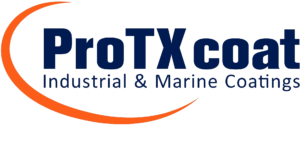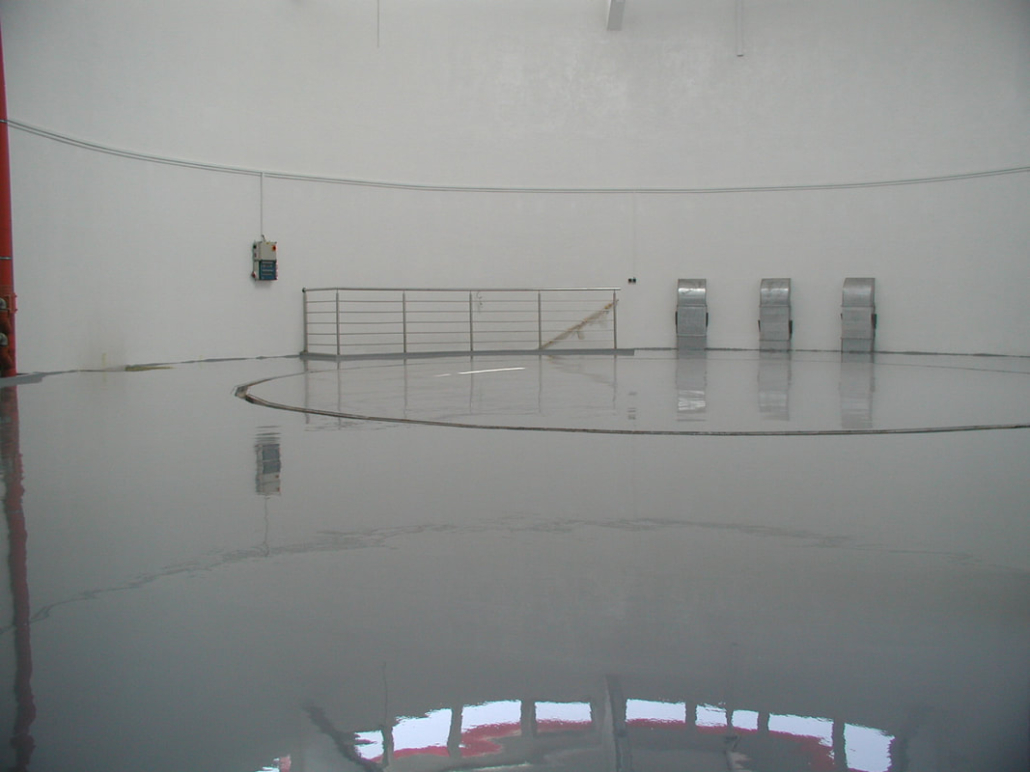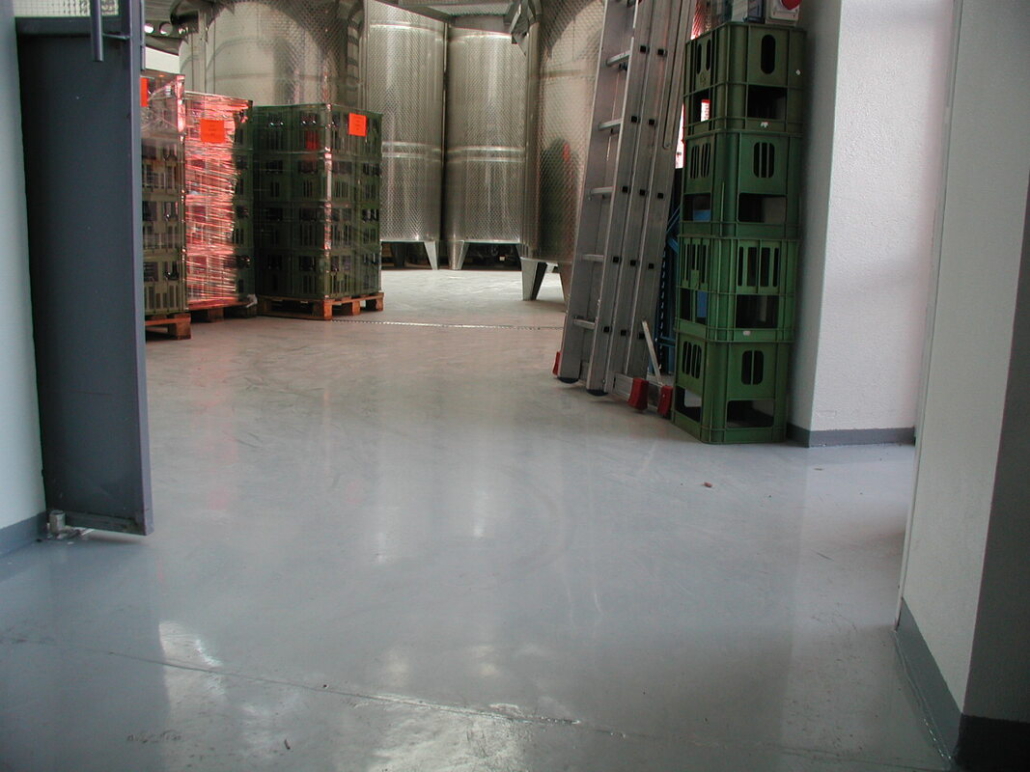ProTXcoat 300FC
Epoxy FC High Build Gloss finish Floorcoat
Epoxy Floor Coating
300FC is a high performance solvent free coating designed for concrete floors.
300FC is based on a special liquid epoxy polymer reacted with a blend of amine and polyamino resins reinforced with inert pigments and silicas which produces a system with exceptional durability for floor surfaces.
Before proceeding, please read the following information carefully to ensure that the correct application procedure is fully understood.
TECHNICAL SPECIFICATIONS
Surface preparation
Steel Surfaces – Heavy contamination due to oil or grease must first be removed using MEK (Methyl Ethyl Ketone). Surfaces should then be abrasive blast cleaned to a minimum Sa21⁄2 – Sa3 BS7079 Part A1 : 1989 or equivalent with a blast profile of 75 – 125 microns corresponding to ‘Rough’ in ISO 8503/1. All loose abrasive dust and debris must be blown clear or vacuum cleaned away.
Existing steel surfaces which have corroded in a chemical environment may be contaminated by soluble iron salts within corrosion pits. To prepare these surfaces it is recommended that one of the following treatments be carried out prior to final dry abrasive blasting to the specified standard.
a) Blasting with a mixture of clean water and abrasive.
b) Initial dry blast cleaning to remove corrosion and surface coatings followed by high pressure clean water jetting (minimum 1000 psi/66 bar).
Concrete Surfaces – All concrete to be coated should either be lightly abrasive blast cleaned using wet or dry abrasive techniques or alternatively high pressure water jetting. Care must be taken not to expose the aggregate in the concrete. All dust and abrasive material shall be removed from the surface prior to coating. Concrete surfaces should have a maximum moisture content of 7% prior to any coating being applied. Concrete surfaces must be primed with ProTXcoat 302 epoxy primer in accordance with the product tech sheet.
Mixing
300FC is a two component material comprising base and activator components which must be mixed together prior to use.
Stir the contents of the base component, continue stirring and gradually add the total contents of the activator container, stir the combined mix until completely homogeneous.
The mixed materials should be used within 25 minutes of mixing at 20°C (68°F). This time will be reduced at higher temperatures and extended at lower temperatures.
Applicaiton
Application should not be carried out at temperatures below 5°C nor when relative humidity exceeds 85% or when the surface to be coated is less than 3°C above the dew point.
300FC is suitable for application by brush or roller, using good quality brushes or short to medium pile rollers.
On concrete surfaces it is important to stipple the 300FC into the primed surface to ensure good wetting of the surface.
Coverage Rate
2.24sqm per kg at 250 microns
Detailed working recommendations are available from the Technical Centre on request.
Physical constants
| Mixing Ratio | Base | Activator |
| 2 | 1 By volume | |
| Appearance | Base | A range of colours |
| Activator | Amber fluid | |
| Drying & Cure Times at 20°C (68°F) | Usable Life | 25 minutes |
| Initial Set | 6 hours | |
| Min Overcoat | 6 hours | |
| Max Overcoat | 36 hours | |
| Volume Solids | 100% | |
| V.O.C. | Nil | |
| Shelf Life | Use within 5 years of purchase. Store in original sealed containers at temperatures between 5°C (40°F) and 30°C (86°F). |
Physical properties
Abrasion Resistance 60 mgm loss per1000 cycles ASTM D 4060 1 kg load – CS17 wheel
Impact Resistance 2.6 joules ASTM G14
Dry Heat Resistance 100oC (212oF) ASTM D2485
Water Vapour Permeability 3.75 x 10-6perm.cm ASTM D1653
Salt Fog Resistance Excellent, unaffected after ASTM B117 10,000 hrs exposure
Humidity Resistance Unaffected 5,000 hrs BS 3900 Part F2
Direct Pull Adhesion 98 kg/cm2(1400 psi) Steel ASTM D4541
Health and safety
As long as normal good practice is observed 300FC can be safely used.
Protective gloves should be worn during use.
A fully detailed Safety Data Sheet is either included with the material or is available on request.
Packaging
Supplied in 11.3 liter pails
The information provided in this Product Data Sheet is intended as a general guide only and should not be used for specification purposes. The information is given in good faith but we assume no responsibility for the use made of the product or this information because this is outside the control of the company. Users should determine the suitability of the product for their own particular purposes by their own tests.





